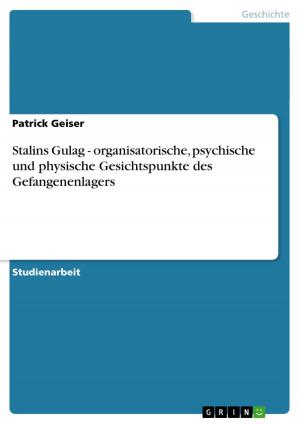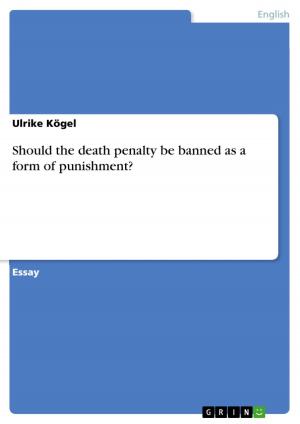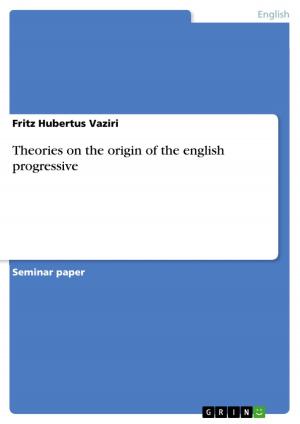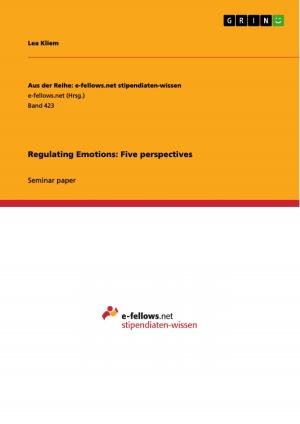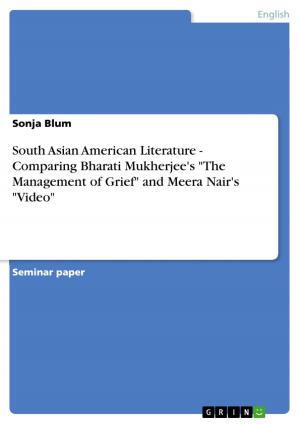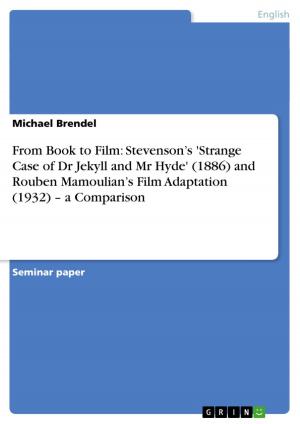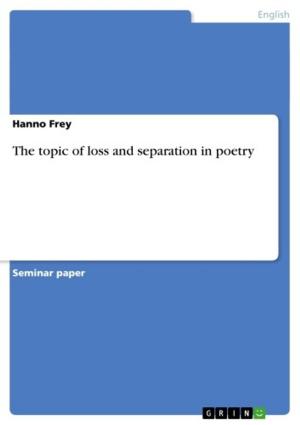What`s your method Mr. Holmes? Deduction, dear Freud, deduction!
Nonfiction, Entertainment, Drama, Anthologies| Author: | Verena Blümel | ISBN: | 9783640142125 |
| Publisher: | GRIN Publishing | Publication: | August 20, 2008 |
| Imprint: | GRIN Publishing | Language: | English |
| Author: | Verena Blümel |
| ISBN: | 9783640142125 |
| Publisher: | GRIN Publishing |
| Publication: | August 20, 2008 |
| Imprint: | GRIN Publishing |
| Language: | English |
Seminar paper from the year 2005 in the subject American Studies - Literature, grade: 2,0, University of Frankfurt (Main), 29 entries in the bibliography, language: English, abstract: In the movie The Seven-Per-Cent-Solution, Sigmund Freud and Sherlock Holmes join their forces in a rather weird series of adventures. In this paper, these two legendary figures will meet again: Freud, a detective of the unconscious, and Holmes, the famous Victorian investigator of the criminal side of human nature. The first, a historical character who has entered popular imagination; the latter, a fictional one so well known that he has often been taken for real. So why will they meet again? Well, apart from their love of cocaine , Holmes and Freud share a certain style of reasoning, more precisely, both of them make use of a method of reading signs known as the 'Morelli-method'. One part of this paper primarily deals with the style of reasoning Sherlock Holmes is making use of and how he applies his method. Therefore, the term paper will mainly refer to Arthur Conan Doyle`s detective novels A Scandal in Bohemia and The Sign of Four. Another part of the paper will give a closer look at Sigmund Freud and his method. Therefore, a short introduction of his theory of psychoanalysis will be given, followed and underlined by examples from one of his ingenuous case studies, commonly known as The Wolf-Man. Especially the centerpiece of this case-study, the analysand`s dream, will be discussed. After that the collected similarities between Sherlock Holmes and Sigmund Freud respectively the analogies between the literary and the scientific discourse of the time of the late 19th and the early 20th century will be summarized. This will form the main part of this paper. It will turn out that Holmes and the Viennese professor do not only use a similar method to solve their cases - which is well observed and described by Carlo Ginzburg in the essay Morelli, Freud, and Sherlock Holmes: Clues and Scientific Method. Even the narrative structure of their case-studies is of striking ressemblance. The conlusion will emphasise in general the importance of Holmes and Freud for the Victorian society of their days. But before shedding some light on these two brilliant thinkers, it is necessary to take a short glimpse on the so-called and already mentioned 'Morelli-method'.
Seminar paper from the year 2005 in the subject American Studies - Literature, grade: 2,0, University of Frankfurt (Main), 29 entries in the bibliography, language: English, abstract: In the movie The Seven-Per-Cent-Solution, Sigmund Freud and Sherlock Holmes join their forces in a rather weird series of adventures. In this paper, these two legendary figures will meet again: Freud, a detective of the unconscious, and Holmes, the famous Victorian investigator of the criminal side of human nature. The first, a historical character who has entered popular imagination; the latter, a fictional one so well known that he has often been taken for real. So why will they meet again? Well, apart from their love of cocaine , Holmes and Freud share a certain style of reasoning, more precisely, both of them make use of a method of reading signs known as the 'Morelli-method'. One part of this paper primarily deals with the style of reasoning Sherlock Holmes is making use of and how he applies his method. Therefore, the term paper will mainly refer to Arthur Conan Doyle`s detective novels A Scandal in Bohemia and The Sign of Four. Another part of the paper will give a closer look at Sigmund Freud and his method. Therefore, a short introduction of his theory of psychoanalysis will be given, followed and underlined by examples from one of his ingenuous case studies, commonly known as The Wolf-Man. Especially the centerpiece of this case-study, the analysand`s dream, will be discussed. After that the collected similarities between Sherlock Holmes and Sigmund Freud respectively the analogies between the literary and the scientific discourse of the time of the late 19th and the early 20th century will be summarized. This will form the main part of this paper. It will turn out that Holmes and the Viennese professor do not only use a similar method to solve their cases - which is well observed and described by Carlo Ginzburg in the essay Morelli, Freud, and Sherlock Holmes: Clues and Scientific Method. Even the narrative structure of their case-studies is of striking ressemblance. The conlusion will emphasise in general the importance of Holmes and Freud for the Victorian society of their days. But before shedding some light on these two brilliant thinkers, it is necessary to take a short glimpse on the so-called and already mentioned 'Morelli-method'.


